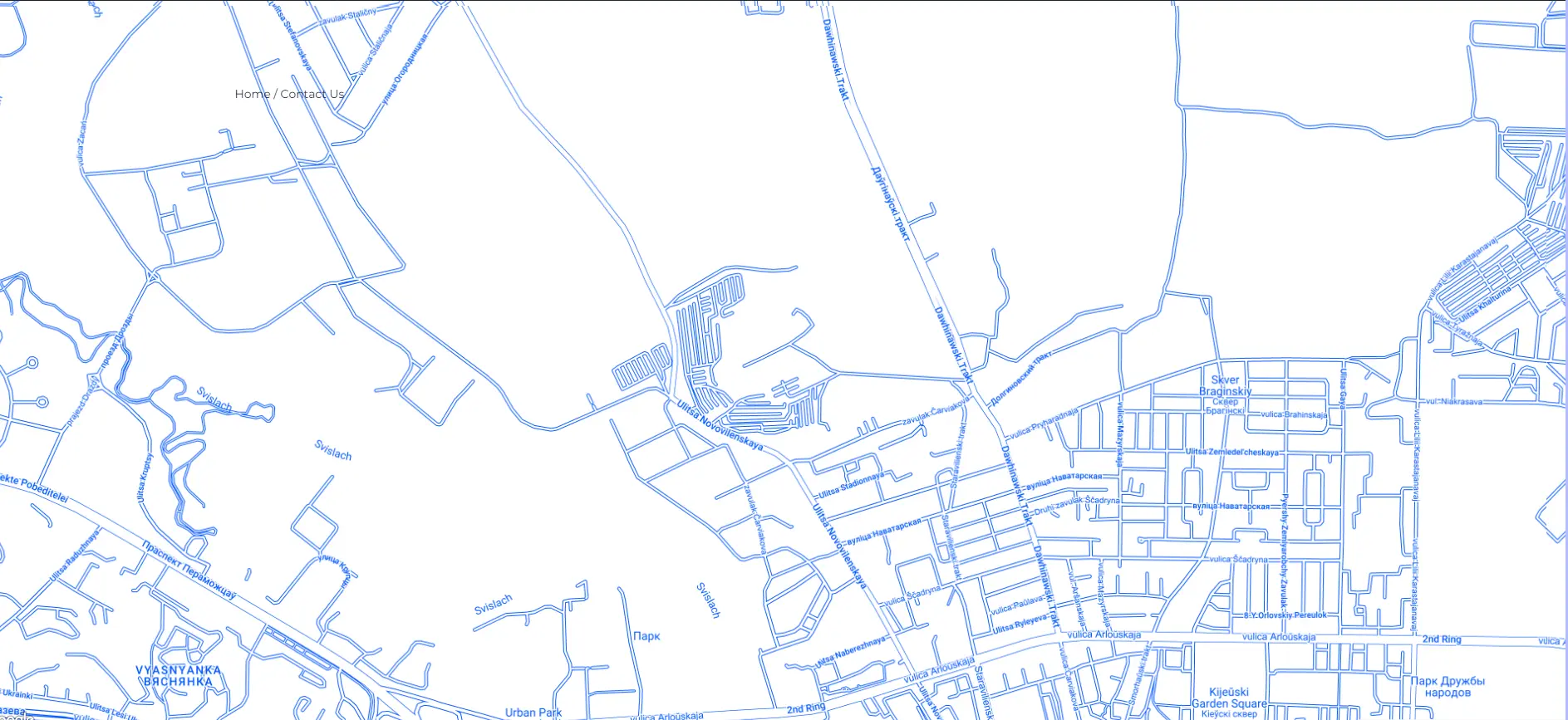Failure to fulfill payment obligations is one of the most common problems in both business and private relationships. Whether it concerns overdue debts between companies, unpaid services, loans, rent, or debts between individuals, the creditor faces the need to find ways to recover their funds.
In Belarus, debt collection is not only a matter of financial stability but also the protection of lawful interests. Having outstanding debts can significantly complicate a company’s operations, disrupt the plans of individual entrepreneurs, or lead to personal losses. Each case requires a particular approach: some debts are collected initially through a claim procedure, others through court, a notary’s enforcement inscription, or the system of enforcement authorities.
In this article, we will examine the types of debts most commonly encountered in practice, the specifics of handling each type, and how to choose an effective strategy for recovery. We will also explain how our lawyers and attorneys can assist at every stage of collection, from situation analysis to court support and interaction with the debtor.
Types of Debts in Belarus
Debt can arise in various areas, from business relationships to everyday situations. Understanding the nature of the debt and its particularities allows selecting the proper collection method and avoiding additional loss of time and resources. Below are the main types of debts most frequently faced by individuals and organizations in Belarus.
Debts Between Legal Entities
In business, the most common debts relate to supply contracts, work contracts, lease agreements, service agreements, and other types of commercial obligations. The main reasons for debts are usually payment delays, refusal to sign acceptance certificates, disputed contract terms, or lack of clear documentation of commitments.
Collecting such debts requires careful document preparation, understanding the specifics of contractual relations, and usually involves first attempting an out-of-court settlement, followed by filing a claim with the economic court.
Debts Between Individuals
Debt between citizens can arise based on IOUs, informal agreements, verbal contracts, or personal loans. In these cases, evidence is crucial, such as written confirmation of funds transfer or other obligations.
Courts of general jurisdiction handle such cases. Preparation requires a meticulous approach to gathering evidence and drafting the claim petition.
Loan and Credit Debts
One of the most common debt types is unfulfilled obligations on loan or credit repayment. This can be a bank loan or a private loan between individuals or legal entities.
If the debt amount is documented (contract, IOU, payment schedule), the creditor has the right to recover the debt through court or, in some cases, via a notary’s enforcement inscription.
Debts on Rent, Utilities, and Other Obligations
Debts may also arise under lease agreements (residential or commercial property), unpaid utility bills, telephone services, security, maintenance, etc.
Such debts are often collected at the initiative of landlords, management companies, or service providers. In some cases, simplified collection procedures are used, for example, by applying to a notary to issue an enforcement inscription.
Understanding the nature of the debt is the first step toward effective recovery. In practice, every situation requires an individual approach. Our lawyers and attorneys can assess the prospects of collection, prepare all necessary documents, and represent your interests at all stages of the process.
Main Methods of Debt Collection
Various mechanisms are used to recover debts in Belarus, from amicable negotiations to going to court or involving a notary. The choice of method depends on the nature of the debt, the amount, the presence of supporting documents, and the parties’ willingness to cooperate. Below are the main practical options for debt collection.
Claim Procedure and Out-of-Court Settlement
The first step after a debt arises is usually an attempt at out-of-court settlement. This stage includes:
- Sending a written claim to the debtor demanding repayment.
- Negotiating terms and deadlines for repayment.
- Signing an agreement on restructuring or payment schedule (if the parties reach a compromise).
Out-of-court settlement saves time and money, helps preserve business relationships, and avoids the need to go to court. A properly drafted claim also fixes the creditor’s position and may serve as evidence in court later.
Judicial Debt Collection: Claims and Procedural Features
If the debtor ignores the claim or refuses to fulfill obligations, the creditor must file a lawsuit. Depending on the parties and the nature of the obligation, disputes are heard by:
- Economic courts (if both parties are legal entities or individual entrepreneurs).
- Courts of general jurisdiction (if at least one party is an individual).
To file a claim, it is necessary to prepare a petition with substantiated demands and attach evidence such as contracts, IOUs, correspondence, reconciliation acts, payment documents, etc.
After the case is reviewed, the court issues a judgment and an enforcement document. With this, the creditor can apply to a bailiff to start enforcement proceedings.
Collection via Notary’s Enforcement Inscription
An alternative to court proceedings in some cases is the notary’s enforcement inscription. This option applies to certain types of debts confirmed by documents (e.g., IOU, loan agreement, reconciliation act) and not disputed.
Advantages of this method include:
- Speed — a notary’s decision is usually made within one day, much faster than court.
- No court fees (only notary fees).
- Immediate commencement of enforcement by bailiffs.
However, enforcement inscriptions are not possible for all types of obligations. The notary only accepts cases where the debt is undisputed and documents meet legal requirements.
Our lawyers and attorneys can select the optimal collection method, prepare claims, lawsuits, or the notary package, and support you at every stage until full debt recovery.
Debt Recovery in Belarus
Resolve debt recovery issues in Belarus for companies and legal entities with professional legal support!
Features of Assignment of Claims and Debt Transfer Procedures
Sometimes, the most effective way to resolve a debt situation is not direct collection but transferring rights or obligations to another party. Mechanisms such as assignment of claims (cession) and debt transfer allow flexible management of commitments, risk optimization, and achieving repayment, bypassing standard procedures.
Let’s look at the essence of these procedures and the situations where they apply.
Assignment of Claims (Cession): What It Is and How It Is Applied
Assignment of claims, or cession, is a transaction whereby the original creditor (the assignor) transfers their right to claim a debt to another party (the assignee).
Key features:
- Consent of the debtor is not required to conclude the agreement unless otherwise stipulated by the contract between the original parties.
- The debtor is notified that the creditor has changed and future payments must be made to the new creditor.
- Assignment can be either for consideration (for example, in the sale of debt) or gratuitous (when transferred between related parties or within corporate groups).
Cession is widely used:
- In the sale of debts to collection agencies.
- During business restructuring.
- For transferring rights between legal entities within a corporate group.
A legally properly executed assignment agreement enables the new creditor to lawfully demand debt repayment, file lawsuits, or apply other collection measures.
Debt Transfer: Procedure and Conditions
Debt transfer is a process where the obligations to repay a debt shift from one debtor to another. Unlike cession, this concerns responsibility rather than rights.
The main condition: such transfer is only possible with the consent of the original creditor, as the party obligated to perform changes.
Example: company A owes Company B but proposes that Company C repays the debt instead. If Company B agrees, a debt transfer agreement is concluded, and the obligations officially pass to the new debtor.
This mechanism is often used:
- During business reorganizations.
- When transferring projects from one contractor to another.
- To settle complex settlements involving multiple parties.
It is important that all terms of the debt transfer are documented in writing, with no disputes among parties about the scope and deadlines of obligations.
Our lawyers and attorneys are ready to assist in preparing and formalizing assignment and debt transfer agreements, as well as protecting your interests if disputes arise. We can select the most advantageous and reliable strategy in each specific case.
Debt Collection Through Enforcement Proceedings
Obtaining a court decision or a notary’s enforcement inscription does not guarantee actual debt recovery. To achieve real enforcement, it is often necessary to apply to enforcement authorities. This stage is often the longest and requires as much attention as the collection procedure itself.
How enforcement proceedings start
To initiate enforcement, the creditor must:
- Obtain an enforcement document (a court decision with entry into force or a copy of the notary’s enforcement inscription).
- Submit an application to the enforcement authority at the debtor’s place of residence or registration.
- After that, the bailiff opens enforcement proceedings and begins enforcement actions.
Measures the bailiff can apply to recover the debt
To ensure debt recovery, the bailiff may:
- Seize the debtor’s property (including funds in bank accounts).
- Impose arrest on vehicles, real estate.
- Restrict the debtor’s ability to leave the country.
- Attach the debtor’s salary or other income.
- Organize public auctions to sell the debtor’s property.
Additionally, at the creditor’s initiative, the bailiff can request information from banks, registration authorities, and other institutions to identify the debtor’s assets.
Possible complications
In practice, enforcement may be delayed due to:
- The debtor hiding assets or transferring them to third parties.
- The bailiff’s inactivity.
- The creditor’s lack of information about the debtor’s financial situation.
In such cases, legal support is essential: filing additional motions, appealing the bailiff’s inactivity, and applying legally sound pressure on the debtor.
Our lawyers and attorneys provide full support during enforcement proceedings: preparing requests to the enforcement service, monitoring progress, protecting creditor’s rights in complaints against officials’ actions or inactions. We pursue not just court decisions but actual debt recovery.
The Role of Lawyers and Attorneys in Debt Collection
The debt recovery process can be complex, especially if the debtor avoids communication, denies the debt, or delays the procedure. In such cases, involving experienced professionals greatly increases the chances of timely and successful collection. Lawyers assist not only legally but also organizationally, strategically, and in negotiations.
Key stages where professional involvement is critical:
Consultation and situation assessment
Every debt collection case starts with analyzing facts and documents. Lawyers:
- Review contracts, acts, correspondence, IOUs.
- Verify the existence and amount of debt.
- Assess the feasibility of out-of-court recovery.
- Evaluate risks, including statute of limitations and possible debtor defenses.
At this stage, they develop a collection strategy based on the client’s goals.
Document preparation and formalization
Properly drafted documents are key to success in any type of collection. Specialists can prepare:
- Claims or demands for debt repayment.
- Assignment or debt transfer agreements.
- Document packages for notary enforcement inscription.
- Lawsuit petitions and attachments for court filing.
Documents must be legally sound and drafted with potential judicial use in mind.
Representation in court and dealings with debtors
If the case proceeds to court, lawyer participation is crucial. Lawyers:
- Draft and file the claim.
- Represent the client at court hearings.
- Develop the case position.
- Respond to the opposing party’s objections and motions.
- Represent the client in appeals or cassation if necessary.
Lawyers can also negotiate with the debtor to recover the debt without litigation, both pre-trial and after court judgments.
Support during enforcement and interaction with enforcement authorities
Even with a favorable court ruling, creditors may face difficulties enforcing it. Our specialists accompany the enforcement phase by:
- Preparing submissions to bailiffs.
- Monitoring enforcement progress.
- Coordinating seizure of assets, travel bans, and other measures.
- Filing complaints against bailiffs’ inactivity or delays.
A comprehensive approach, accurate risk assessment, and professional support make lawyers indispensable in debt collection. We are ready to assist at any stage, from consultation to actual recovery through enforcement.
Conclusion
Debt recovery is a challenge that entrepreneurs and private individuals inevitably face. Regardless of debt type, it is crucial to act promptly and build a sound collection strategy. Effective results require a combination of legal expertise, careful document preparation, and consistent actions, from enforcement claims.
Timely consultation with a lawyer helps avoid mistakes, save resources, and increase chances of successful dispute resolution. Our specialists are ready to thoroughly analyze your situation, propose the optimal collection path, and support you at every stage, from document preparation to actual funds recovery.
Contact us
If you have any questions related to debt collection in Belarus, we will be happy to help! Our long-term experience will help you choose a lawyer to represent your interests.
- +37529142-27-19 (WhatsApp, Viber, Telegram);
- info@ambylegal.by.





